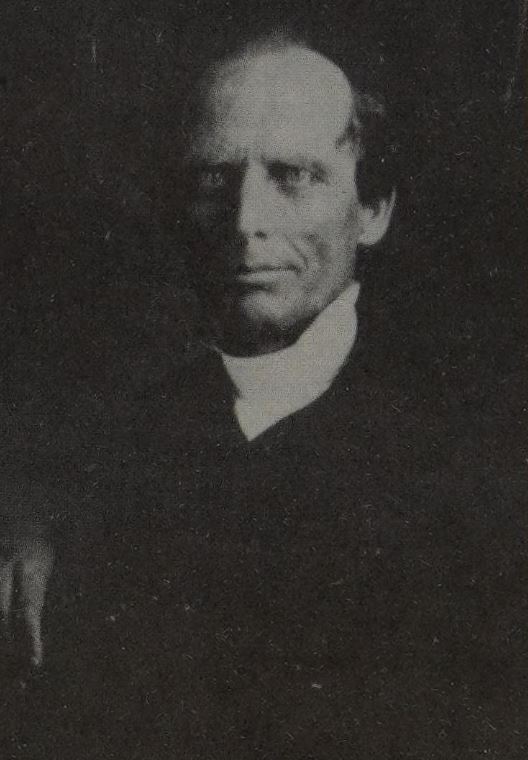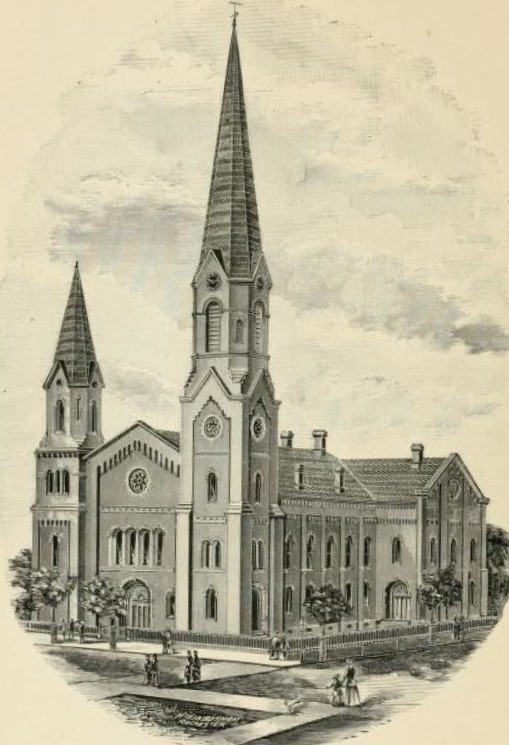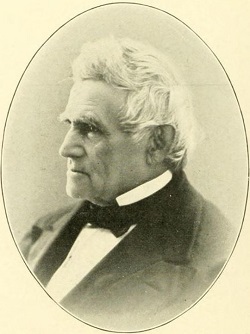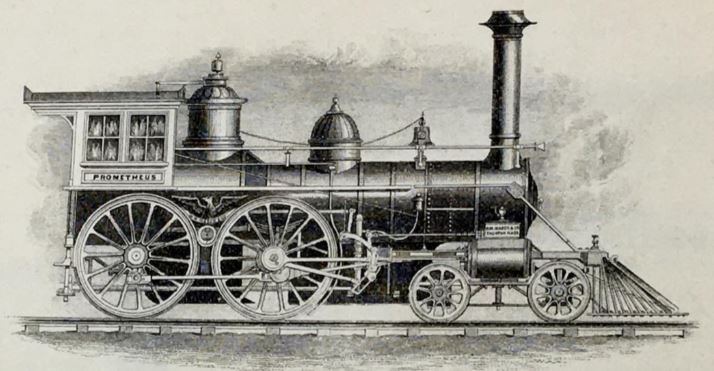


Charles Grandison Finney – Father of modern revivalism and the leading figure of the Second Great Awakening
Introduction
Charles G. Finney’s (1792-1875) unique methods of evangelism earned him the title of the “father of modern revivalism.” His methods paved the way for other mass-evangelists, like Dwight L. Moody, John W. Chapman, Billy Sunday, and Billy Graham, who adapted and built upon Finney’s methods.
Background Information
With this revival account being one in a sequence of revivals during the life of Charles G. Finney, we recommend reading them in chronological order:
► 1824 Evans Mills German Settlement Revival
► 1824 Antwerp, New York Revival
► 1824 Revival at Perch River and Other Locations
► 1825 Revival in Gouverneur, New York
► 1825 Revival in De Kalb, New York
► 1825 Revival in Western, New York
► 1825 Revival in Rome, New York
► 1826 Revival in Utica, New York
► 1826 Revival in Auburn, New York
► 1826-1827 Revival in Troy, New York
► 1827 New Lebanon & Stephentown Revivals
► 1827-1829 Revival at Wilmington and Philadelphia
► 1829 Reading, Pennsylvania Revival
► 1829 Lancaster, Pennsylvania Revival
► 1829 Columbia, New York Revival
► 1830 New York City Revival
► 1830-1831 Rochester, New York Revival
► 1831 Revivals in Auburn, Buffalo, Providence & Boston
► 1832 New York City Revival
► 1835-1840 Revivals in Oberlin, Ohio
► 1841-1842 Boston & Providence Revivals
► 1842 Rochester Revival
► 1842-1843 Revivals in Oberlin, New York, and Boston
► 1849 Revivals in Houghton, Birmingham, and Worcester
► 1850-1851 London, England Revival
► 1851-1853 Revivals in Oberlin, New York City, Hartford, & Syracuse
► 1853-1855 Revivals in Ohio & New York
From Oberlin to Rochester
After a 7-week revival in Rome, New York, Finney returned to Oberlin, Ohio, where he resided. In Oberlin he also had responsibilities as the pastor of the First Congregational Church, teaching theology at Oberlin College, and also being the president of that college (from 1851-1866).
Extraordinary Prayer in Rochester, New York
There was a group of believers in Rochester, New York, that had been praying through the summer of 1855. Their prayers were focused on an outpouring of the Holy Spirit. In their wrestling with God in prayer, “they felt they were on the eve of a great revival.”
Acting on their prayers, they sent a request for Finney to come and hold meetings for them. Even with the letter being signed by a large number of people, including the ministers and elders of several churches, Finney was reluctant to go.
Prophecy of the Revival
As Finney was contemplating the call to Rochester, and presenting many objections to his going, he heard a prophecy about it being God’s will:
The Lord is going to send you to Rochester; and you will go to Rochester this winter, and we shall have a great revival.
After making up his mind to go, he left Oberlin on December 24, 1855, and started preaching in Rochester on Sunday, December 30, and according to Finney:
It soon became apparent that the Spirit of God was working among the people.
Preaching alternately in different churches on Sundays and during the week, he worked with two Presbyterian churches and one Congregational church. The Baptist and Methodist churches were also engaged in revival efforts “in their own way,” and it helped to extend the revival’s influence throughout the town and region.
In early March 1856, the Baptist and Methodist churches invited Finney to preach in their churches too, in addition to the other ones he was already preaching in.

One of the churches Finney preached at during the revival: Second Presbyterian Church, also known as Brick Church (seated 1,250)
Extraordinary Prayer Kept the Revival Going
A morning prayer meeting involving all the churches was held every day from 9:00 to 10:00. The meeting location rotated from church to church, with numbers reaching 600 – 800. Many from outside the city came to attend and witness the morning prayer meetings, and then stayed the entire day to attend the meetings. These people would then return to their respective cities, towns, and villages, and start similar united prayer meetings.
The 1857 New York Prayer Revival has been assumed to have begun in New York City, but the movement in united prayer began in Rochester during this 1855 revival, and slowly spread throughout the nation. The 1857 New York Prayer Revival was an overflow of the revival that was started in Rochester.
Regretful Opposition to the Revival
The First Presbyterian Church pastor, Joshua Hall McIlvaine was a staunch “Old-School Presbyterian” who cared little for revival efforts like what Finney practiced. In 1891 McIlvaine wrote a letter to someone, indicating his regrets for not opening the doors of his church for Finney to preach in, like what the other churches were doing during the 1855-1856 revival:
Almost all the churches were opened to Mr. Finney, but I, being a true-blue old Scotch Sectarian, would not let him into the First Church, for which I have repented ever since.

Judge Addison Gardiner
The notable judge Addison Gardiner, a prominent character in the 1842 Rochester Revival, pleaded with McIlvaine to invite Finney to his church, but, McIlvaine wrote:
I, in my blindness, stood firm, telling them they might break my heart, but they should not break my principles. The number of converts were incredible. Mr. Finney was heard to say: “If he could only get into First Church, he would have all Rochester converted;” and I do not doubt but he would…
In another letter McIlvaine wrote:
I have long been convinced, that I was totally wrong [about not inviting Finney to preach in his church] and have since taken occasion to say so to the church itself.
Special Request from Lawyers
Not long after Finney started ministering in Rochester, he received a request from a group of lawyers and judges, some of them on the Court of Appeals as well as the Supreme Court, asking him to preach a series of lectures specifically for those in the law profession. This was similar to what he did during the 1842 Rochester Revival.
Finney followed through on the request, and the lectures proved effective, because:
They began to break down, and a large proportion of them were hopefully converted. As the revival at this time, as well as at other times, took effect to a very large extent among the principal unconverted inhabitants of the city, it spread very generally through the city. What was quite remarkable in the three revivals that I have witnessed in Rochester,—they all commenced and made their first progress among the higher classes of society.
The Talk of the Town
A student at the Baptist Bible college at the time, William C. Wilkinson, commented on how the entire city had been taken captive by the revival:
The interest is extraordinary. The city was taken possession of. Scarcely anything else was talked about. The atmosphere was full of a kind of electricity of spiritual power. The daily papers all reported the meetings at great length.
Strangers casually visiting the city were unable to resist the infection of the prevailing religious influence.
Women and the Revival
The women in Rochester were very active and effective with their evangelistic efforts among all economic groups. They would visit stores and places of business, inviting the clerks and employees of those establishments to the services.

Railroads Suspended on Sundays
With many men connected with the railroad being converted, travel on Sundays eventually stopped as they began to observe the day of rest. Over the next two decades the Sunday observance declined, and by the 1880s all trains ran on Sundays.

Train of 1856
Finney Leaves Rochester
The revival continued through the winter and into the spring, and as the revival seemed to reach its highest intensity, Finney became sick and left Rochester for his home in Oberlin on May 4, 1856.
Results of the Revival
► Many students at the Baptist college were converted.
► There were more converts during this revival than during the two previous revivals Finney conducted in Rochester (1830–1831 Rochester, New York Revival & 1842 Rochester Revival).
► There were 1,000 who had joined the Rochester churches as a result of the 1856 revival. There were many other conversions of those from without the city, and of those who, for whatever the reason, did not join a church.
Primary Sources
► Chapter XXXII: The Memoirs of Charles G. Finney by Charles G. Finney
► The Memoirs of Charles G. Finney: The Complete Restored Text by Charles G. Finney
Secondary Sources
► Charles G. Finney by Wikipedia
► Charles Grandison Finney & the Second Phase of the Second Great Awakening by Christian History Institute
► Great Revivals and the Great Republic by Warren Candler
► Man of Like Passions: The Life Story of Charles Grandison Finney by Richard E. Day
► Memoirs of Revivals of Religion by Charles G. Finney
► The Story of Oberlin by Delavan L. Leonard
Return to List of Revival Stories
Chet & Phyllis Swearingen:
Office: (260) 920-8248
romans1015@outlook.com
Beautiful Feet
P.O. Box 915
Auburn, IN 46706

